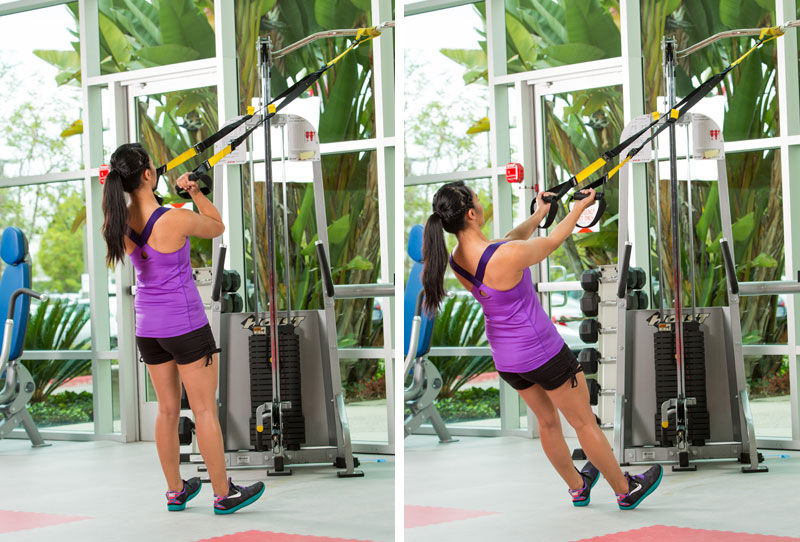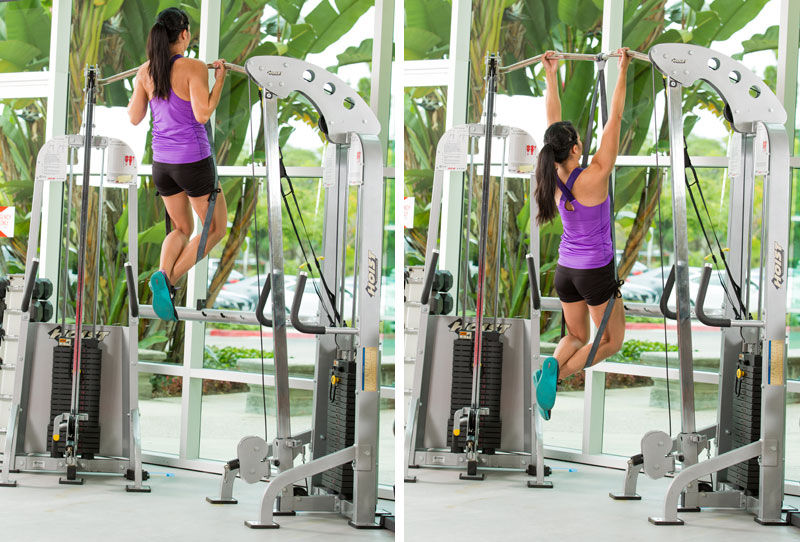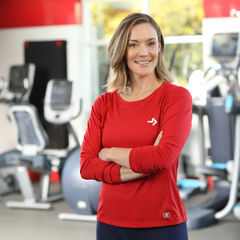“How many pull-ups can you do?” If you’re a health and fitness professional, you’ve probably been asked this a few times by a client, friend or a random person who notices your healthy lifestyle. But what does the ability to do an unassisted pull-up have to do with fitness? Because performing the pull-up involves moving the entirety of your own bodyweight up against gravity, it takes incredible upper-body strength and trunk stability.
The pull-up has long been used to assess overall upper-body strength as it is a “pulling” motion, one of the five essential movement patterns described in the ACE Integrated Fitness Training® (ACE IFT®) model. By mastering the pull-up along with the bend and lift, single-leg, pushing and rotating movements, we are better equipped to move effectively and efficiently in our daily lives.
The major muscle groups required to perform an effective pull-up include the large back muscles—latissimus dorsi and rhomboids—as well as the posterior deltoids and biceps. The trunk and other stabilizers also play a role in the ability or move the body up and down against gravity. When performing a proper pull-up, it is important to “pack the shoulders” or set the shoulder blades (scapula) in the correct and most powerful position to ensure that the right muscles are doing the work. Grasp that bar and, before beginning the pull-up motion, maintain straight arms and pull the shoulder blades down the back and together (as if putting the scapula in your back pocket while pinching them together). Maintain this position of the shoulder blades as you engage the back and arms to pull yourself upward.
Because performing a full, unassisted pull-up is a challenging task for most people, the following exercises should be a part of your routine if your goal is to complete this essential movement pattern without assistance. Perform each of these four exercises as a part of your strength-training routine. To improve overall strength, perform two to four sets of eight to 12 repetitions using a weight that only allows you to complete your goal repetitions and sets safely.
Assisted Pull-up

Place one end of a super band around the pull-up handles. Depending on the length and tension of the band, place either your foot/feet or knee/knees into the bottom loop. Perform a standard pull-up and allow the band to help you maintain proper form and raise your head above the bars. To increase or decrease the level of difficulty, change the type of band to allow for an increase or decrease in assistance.
Until necessary strength is established, this move helps to establish the correct movement pattern for executing the perfect pull-up.
TRX Biceps Curl

Using the TRX or other suspension system, lean back with arms straight. Turn the palms inward and bend the elbows, curling the hands in toward the chest. This will bring the body upward. Keep the elbows high and curl the hands all the way in to the chest. Slowly release back to the starting position while maintaining a straight line from head to feet. To increase or decrease the intensity of this exercise, move the feet closer to (harder) or farther away from the anchor point (easier).
This move helps to develop strength in the biceps and shoulders with the use of body weight against gravity.
Straight-arm Pull-downs

Using a cable machine with the lat pull-down bar attachment, place the hands shoulder-width apart on the bar. Back up and hinge forward at the hips, while also bending the knees slightly. Keeping the arms straight, engage the lats and press the bar down to the thighs.
This move is great for improving both lat strength as well as the trunk stability necessary for mastering the pull-up.
Eccentric Chin-ups

Use a step, band or a jumping start to bring your chin above the bar. Slowly lower yourself down to where your arms are fully extended. To make this either more or less difficult, vary the time that it takes you to lower your body. The slower the movement the more difficult it will be.
Research has shown that eccentric movements contribute to faster strength gains, but be warned post-exercise soreness is also more likely.
 by
by 










 by
by